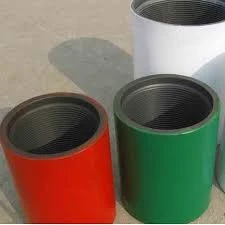casing coupling dimensions
Understanding Casing Coupling Dimensions An Overview
Casing coupling dimensions are crucial aspects of oil and gas drilling operations. They ensure that the casing pipes, which protect wells from collapse and contamination, fit together properly. The design and measurement of casing couplings influence the integrity and efficiency of drilling projects, making it essential for engineers and project managers to have a clear understanding of these dimensions.
Casing is a cylindrical structure that is inserted into a drilled well to provide structural integrity. It serves several vital purposes, including preventing the collapse of the wellbore, protecting groundwater from contamination, and allowing for the safe extraction of hydrocarbons. Casing comes in various sizes and grades, each suited for different geological conditions and drilling environments. The connections between these casing pipes, known as couplings, are critical to maintain the overall strength and reliability of the well.
Couplings can be categorized into various types, such as threaded, welded, and slip-type couplings. Each type has specific dimensional standards that dictate how they are manufactured and installed. The American Petroleum Institute (API) has established standardized dimensions for casing couplings, ensuring compatibility across different manufacturers and equipment. These standards cover various dimensions, including outer diameter (OD), inner diameter (ID), length, and the threading patterns used to connect casing segments.
One of the primary concerns related to casing coupling dimensions is the potential for failure at the joint connections. Poorly made couplings or incorrect dimensions can lead to leaks or mechanical failures, jeopardizing not only the project but also the surrounding environment. Thus, precise measurement and adherence to API standards are critical. Engineers must also consider the type of casing being used, the depth of the well, and the geological conditions to ensure optimal performance of the casing system.
casing coupling dimensions

The outer diameter of the casing is a significant dimension that impacts both the well’s structural integrity and the type of equipment that can be used during drilling. For instance, larger casing may provide better protection against high-pressure formations, but it can also add more weight and complicate the drilling process. Therefore, careful attention must be paid to selecting the appropriate casing dimensions that balance strength and practicality.
The thread type is another important dimension in casing coupling design. Different thread types offer varying levels of sealing capabilities and resistance to deformation under stress. API recommendations for thread types, such as API round threads or buttress threads, help ensure that coupling connections are strong and reliable. Testing and quality assurance processes must be in place to verify that every connection meets these standards before being deployed in the field.
In addition to performance considerations, casing coupling dimensions also affect the overall cost and efficiency of drilling operations. Larger casings and specialized couplings may incur higher upfront costs but can lead to long-term savings through reduced downtime and maintenance needs. Companies must conduct careful analyses to weigh these costs against potential benefits.
In conclusion, understanding casing coupling dimensions is essential for the successful execution of drilling projects in the oil and gas industry. By adhering to API standards and considering various design factors, engineers can ensure the structural integrity and safety of wells. With proper attention to these dimensions, companies can mitigate risks, enhance operational efficiency, and protect the environment. As the industry continues to evolve, ongoing advancements in materials and technologies will likely shape the future of casing coupling design and dimensions, further improving safety and efficacy in drilling operations.
-
Choosing the Right Pup Joint Manufacturers for Oil and Gas OperationsNewsAug.22,2025
-
Tubing Coupling: The Small Connector with a Big ImpactNewsAug.22,2025
-
Tubing Crossover: The Essential Connector for Well IntegrityNewsAug.22,2025
-
Precision Flow Control in Well CompletionsNewsAug.22,2025
-
Casing Pup Joint for Optimal Well PerformanceNewsAug.22,2025
-
Reliable Connections with Wholesale Finished Casing CouplingNewsAug.22,2025







